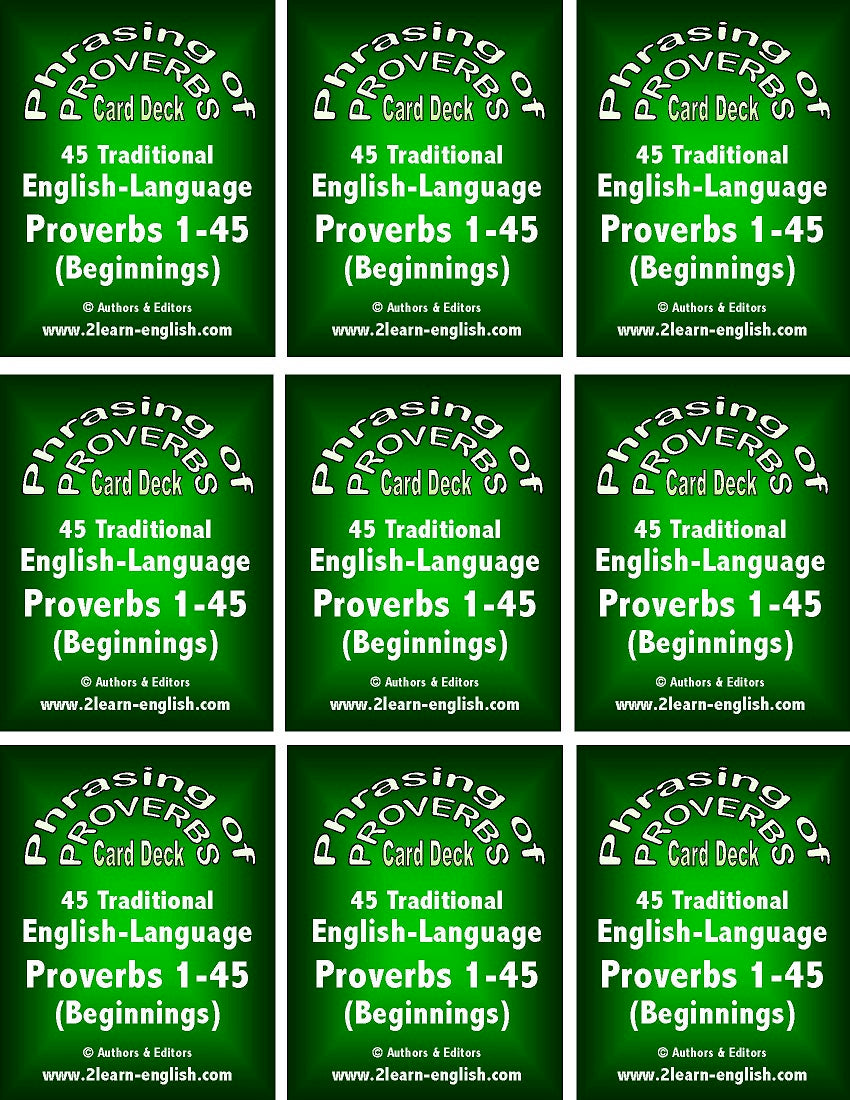Work/Life English
C-09b Phrasing of Proverbs (Two 90-Card Half-Sentence Decks)
C-09b Phrasing of Proverbs (Two 90-Card Half-Sentence Decks)
20 Pages of Nine Proverb-Beginnings Cards Each (with Backs) to Cut Apart; 20 Pages of Nine (Two-Sided) Matching Proverb Endings
20 Nine-Card Pages + 20 Nine-Card Back Pages
Who It’s For: English Teachers, Helpers, & Learners Interested in “Manipulating the “Wisdom” in Phrasing of Traditional Sayings—to Understand & Use in Speech & Writing
Why It’s Useful: Another kind of material to use for “Talking About Anything” (as suggested in E-10.07 (Part Three of Speaking: Oral Language Skills for Real-Life Communication, ”The Game of Wisdom” on page 24) consists of (traditional or updated) Proverbs, Sayings, Quotes. Here are ninety (90) of the best-known of these. They’re not only a common component of “cultural literacy.” They also come in handy in casual speech, for emphasis, and/or when trying to “prove a point.” And when teachers / learners get a chance to “manipulate” their parts physically—as they do when putting them together, the sentences and phrases become even more relevant to the “expression of wisdom,” the exchange of ideas, and the acknowledgment or acceptance of feelings.
What You’ll Do:
[1] Download (any even number of) the forty (40) pages of E-10.09a: Phrasing of Ninety Traditional English-Language Proverbs. Note that the illustrated items to read appear on even numbered pages 2, 4, 6, . . . 36, 38, 40. The odd-numbered pages in between (1, 3, 5, . . . 35, 37, 39) display corresponding Card Backs: their coloring and words indicate if they belong to Deck 1 (Proverbs 1-45) or Deck 2 (Proverbs 46-90)—and if the illustrated phrasing on each card face represents the Beginning or Ending of a recognizable saying. They’ll be most effective in use printed out back-to-back. To use the (up to) 90 Cards in hands-on activity, cut them apart. No matter how many items you use at one time, keep the Beginnings together with their corresponding Endings.
[2] The most obvious way to use the Cards is to match Endings with Beginnings, read Proverbs (aloud), talk about their meanings, give examples of how they’ve proven “true” in real-life (or not), and include them in your thinking, conversation, and writing. Detailed in E-10.09b: Activity & Idea Book for “Phrasing of Proverbs,” are Step-by-Step Instructions for five possible Games, Proverb Worksheets, suggested Learner-Created Activities, Questions About Proverbs, and an Answer-Key List.”
[3] And of course, you’re invited to come up with even more relevant, updated “pieces of wisdom,” make them into Card Decks (or not), and use them in any suggested or better ways of your own.
Couldn't load pickup availability








